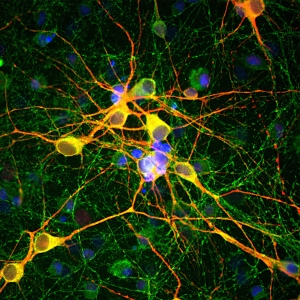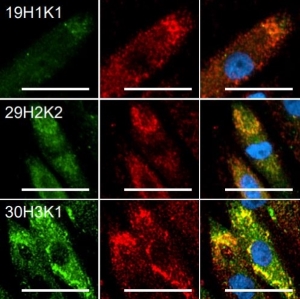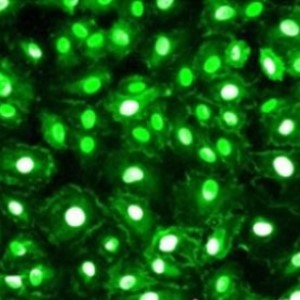Product Details
Product Sizes
| Size | List Price | Price | Cart |
|---|---|---|---|
| 25 ug | $205.00 | Add to Cart | |
| 5 ug | $108.00 | Add to Cart |
The FGFs are a family of more than 20 small (~17–26 kDa) secreted peptides. The initial characterization of these proteins focused on their ability to stimulate fibroblast proliferation. This mitogenic activity was mediated through FGF receptors (FGFRs) 1, 2, or 3. A fourth closely related tyrosine kinase receptor (FGFR4) was able to bind the FGFs but did not lead to a mitogenic response. FGFs modulate cellular activity via at least 5 distinct subfamilies of high-affinity FGF receptors (FGFRs): FGFR-1, -2, -3, and -4, all with intrinsic tyrosine kinase activity and, except for FGFR-4, multiple splice isoforms, and FGFR-5, which lacks an intracellular kinase domain. There is growing evidence that FGFRs can be important for regulation of glucose and lipid homeostasis. The overexpression of a dominant negative form of FGFR-1 in β cells leads to diabetes in mice, which thus implies that proper FGF signaling is required for normal β cell function and glycemia maintenance. FGFR-2 appears to be a key molecule during pancreatic development. Moreover, FGFR-4 has been implicated in cholesterol metabolism and bile acid synthesis. FGF-19, has been shown to cause resistance to diet-induced obesity and insulin desensitization and to improve insulin, glucose, and lipid profiles in diabetic rodents. Since these effects, at least in part, are mediated through the observed changes in metabolic rates, FGF-19 can be considered as a regulator of energy expenditure. FGF-21 is preferentially expressed in liver, but an exact knowledge of FGF-21 bioactivity and its mode of action have been lacking to date. FGF-21 is a potent activator of glucose uptake on adipocytes, protects animals from diet-induced obesity when overexpressed in transgenic mice, and lowers blood glucose and triglyceride levels when therapeutically administered to diabetic rodents. Image: FGF-19 protein structure and sequence References: 1. Molecular insights into the klotho-dependent, endocrine mode of action of fibroblast growth factor 19 subfamily members. Mol Cell Biol 2007 May;27(9):3417-28 |
- Product Reviews- - Rating:
Leave a review for this product and you could be eligible for a $10 Starbucks gift card.
- Product Publications
Product Publications
If you've used this product in a publication, let us know. Email pshuster@neuromics.com, with the publication details and you could be eligible for an Amazon gift card.
- Related Products
Related Products
Name Catalog # Size FGF-1, acidic PR27011 50 ug FGF-1, acidic PR27011 10 ug FGF-1, acidic, Sf9 PR27012 10 ug FGF-1, acidic, Sf9 PR27012 2 ug FGF-2 PR27016 10 ug FGF-2 PR27016 50 ug FGF-2 (Bovine) basic PR27015 50 ug FGF-2 (Bovine) basic PR27015 10 ug FGF-2, basic PR27013 10 ug FGF-2, basic PR27013 50 ug FGF-2, basic, Sf9 PR27014 10 ug FGF-2, basic, Sf9 PR27014 2 ug FGF-22 PR27021 10 ug FGF-22 PR27021 2 ug FGF-9 PR27017 20 ug FGF-9 PR27017 5 ug FGF-9, mouse PR27018 2 ug FGF-9, mouse PR27018 10 ug ISOKine-bFGF PR80001 1 mg ISOKine-bFGF PR80001 100 ug ISOKine-bFGF PR80001 50 ug KGF Human PR27047 10 ug KGF Human PR27047 2 ug KGF-2 PR27048 25 ug KGF-2 PR27048 5 ug
Images
FGF-19 protein structure and sequence
FGF-19 protein structure and sequence






